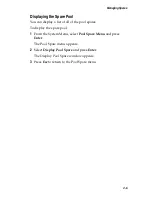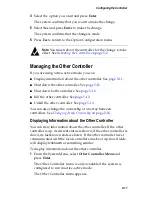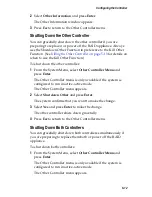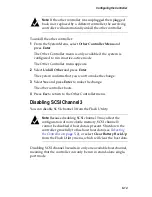
5-1
5
Configuring the Controller
In This Chapter
Rebooting the Controller
5-2
Changing the Date and Time
5-2
Configuring the Host Channels
5-3
Understanding LUNs and Viewing LUN Information
5-5
Configuring the SCSI Channels
5-6
Understanding Operating Modes
5-8
Managing the Other Controller
5-11
Disabling SCSI Channel 3
5-14
Changing the Sample Rate
5-15
Understanding the Audible Alarm
5-16
Locking the Cache
5-17
Configuring the Battery
5-18
Changing the Utility Priority
5-20
Rescanning All Channels
5-21
Pausing I/O
5-22
Restoring Default Settings
5-23















































